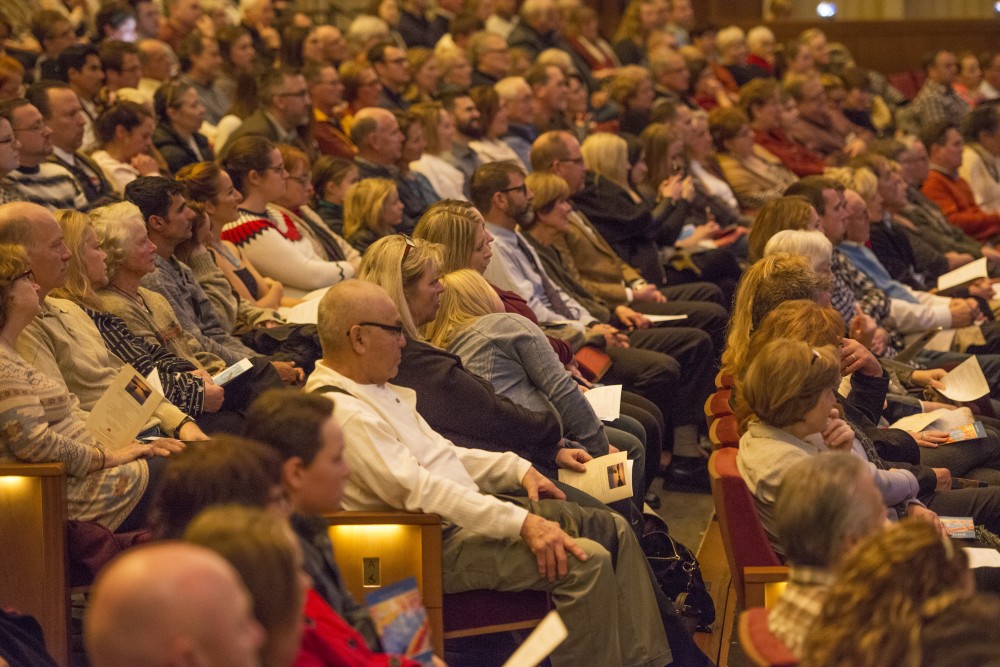Tears streamed down Teri Douglas’ face as she joined the full Northrop Auditorium of students, faculty, researchers and family members of the people who chose to donate their bodies through the University of Minnesota Anatomy Bequest Program.
The Service of Gratitude, which took place on Nov. 8, is an annual memorial put on by the University of Minnesota Anatomy Bequest Program which honors the individuals who donate their bodies to science. Douglas lost her wife, Colleen “Cookie” DuPay, in late September to idiopathic pulmonary fibrosis, a lung condition that has no cure. After hearing from a family member who donated, the couple signed up to be whole body donors a few years earlier.
The educational and research value that DuPay’s body donation gives to the University is one of the few comforts Douglas has after losing her partner of 37 years and wife since 2015.
“The U needs teachers, and I wrote this in her obituary, that she went to the U as a teacher, not a student,” Douglas said.
About 2,000 University of Minnesota students are beneficiaries of whole body donations like DuPay’s each year. The bodies are used in settings like the lab sections of anatomy courses, the mortuary sciences programs, the dental school and medical research.
The University has a strict ethics code for students that learn from whole body donations, which includes a no-phone usage and privacy policy.
Information about the donors, like identifying features, is not allowed to be shared outside of class. Students are expected to respect donors at all times, and things like jokes about dead bodies break the program’s policy.
“They’re very, very on top of making the students aware that it’s a very sensitive thing and a very special thing,” said Christopher Warden, a grad student in the University’s physical therapy program.
Warden comprised a number of students who helped organize the Service of Gratitude. He said that participating in the service was a way for him to get closure after spending months learning from the donors, and to help their loved ones gain closure too.
From the arrival of the donor to the University, to the return of their remains, the program follows a thorough communication process with every family to ensure they are aware of the donor’s status throughout.
“When a donor’s death occurs, first what we realize in this process is that for us it’s our beginning of our relationship with a donor family but for them, the hell they’ve gone through,” said Angela McArthur, director of the anatomy bequest program. “What we try to do is have many small conversations with donor family members and break things down for them.”
When a donor dies, the family notifies the program, McArthur said. From there, the University works with funeral homes to transport the bodies to the program and place them in appropriate setting.
Throughout the donor’s time in the program, families are communicated with three times — first to tell the families how the donor will be used, an invitation to the Service of Gratitude and a final time when the remains are returned, she said.
Numerous academic institutions reach out to the University’s bequest program each year to mimic their policies and procedures because of the “gold standard” the University has created, according to McArthur.
“Since we know we’re doing things the right way we’re not worried about whether we have the capacity to handle it; that’s an absolute,” McArthur said. “That’s a promise we’re making to individuals who have granted us the right of access to their loved ones for a while.”











